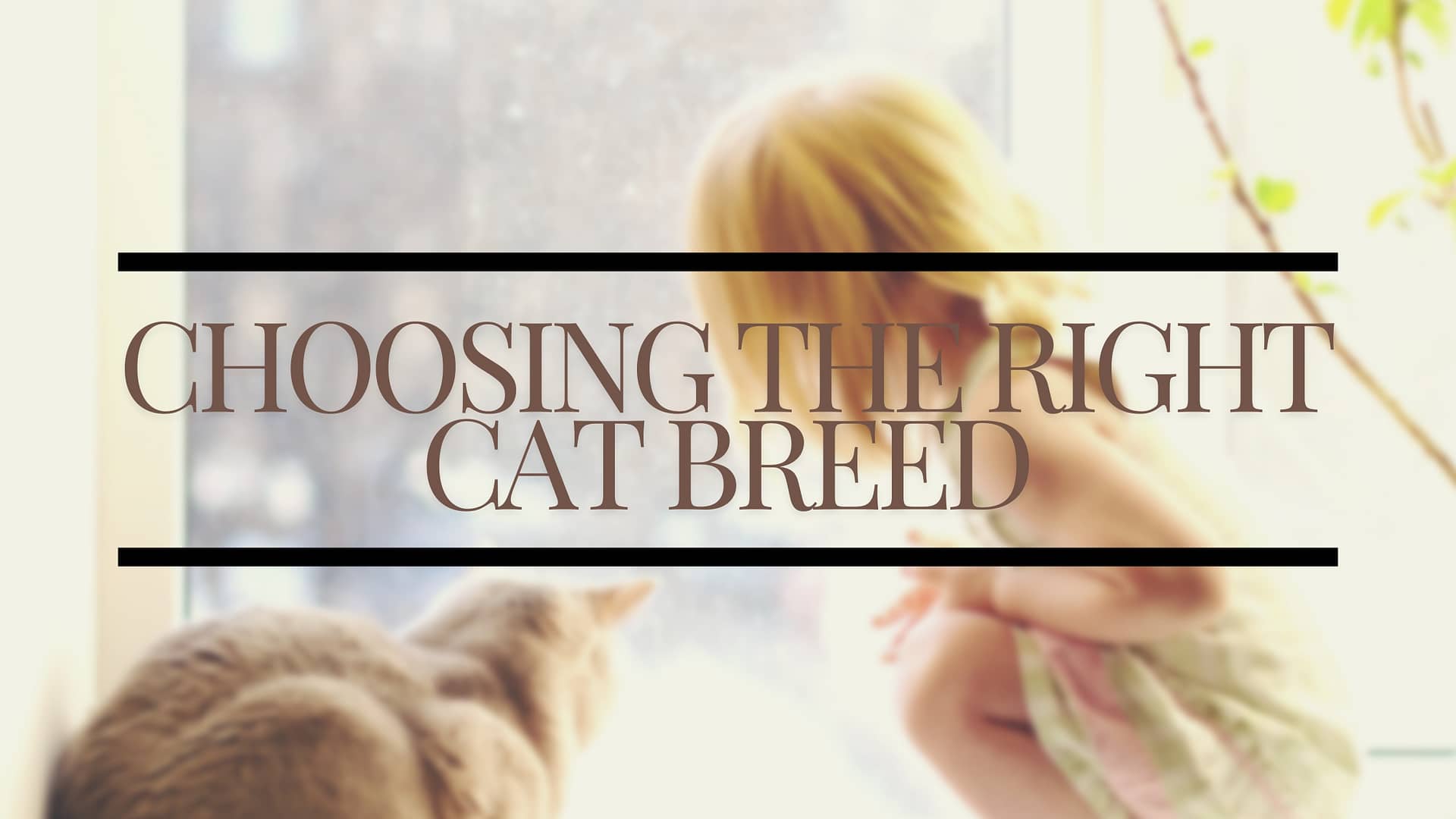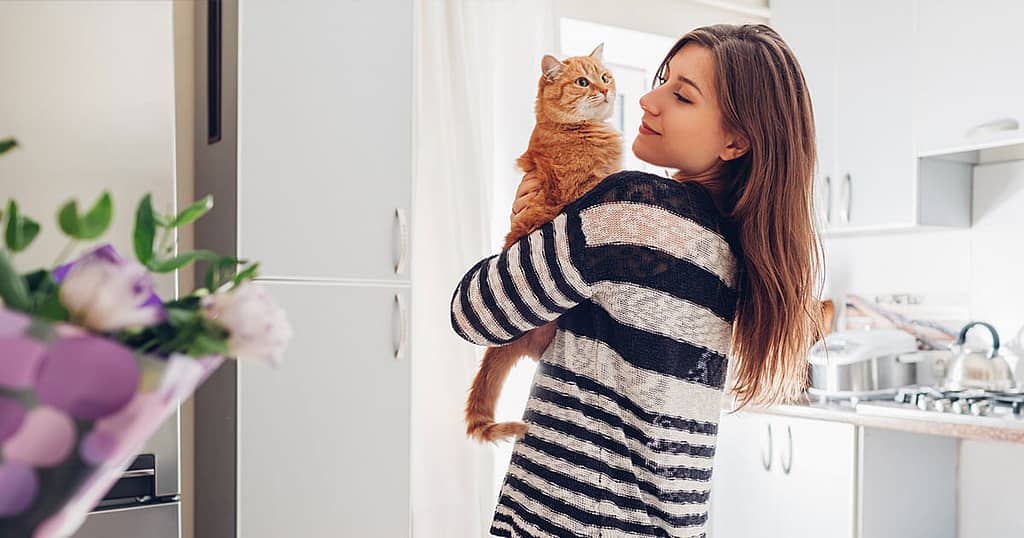Choosing the Right Cat Breed for Your Lifestyle

Choosing the right cat breed for your lifestyle is crucial to ensure a harmonious and fulfilling relationship with your feline companion.
Each cat breed comes with its own set of unique characteristics, ranging from varying activity levels and personality traits to specific grooming needs and health considerations.
The diversity among cat breeds means that there is likely a perfect match for every type of household, whether it’s a busy family home, a quiet apartment, or an environment with other pets.
Understanding these differences and how they align with your living conditions, time commitment, and personal preferences can make all the difference in creating a happy home for both you and your new cat.
Table of Contents
1. Factors to Consider

Living Conditions
When choosing a cat breed, take into account your living conditions.
For those in apartments, breeds that are typically more sedentary and adapt well to indoor living, such as the British Shorthair or Persian, might be ideal. These breeds often have lower space requirements and can be content with a cozy, confined environment.
On the other hand, if you reside in a house with a yard and are open to allowing outdoor access, breeds like the Maine Coon or Bengal, known for their adventurous and active nature, may thrive in such settings.
Activity Level
Another crucial factor is the activity level of the cat breed.
High-energy breeds, such as the Abyssinian or Bengal, require ample playtime and stimulation to keep them happy and healthy. These breeds are known for their playful and energetic dispositions, making them suitable for owners who can dedicate time to active engagement.
Conversely, low-energy breeds like the Ragdoll or British Shorthair tend to be more relaxed and content lounging around, making them a great fit for quieter households or owners with a less active lifestyle.
Time Commitment
Consider the amount of time you can commit to your cat’s grooming, play, and training needs.
Breeds with long fur, like the Persian or Maine Coon, will need regular grooming to prevent matting and maintain their coat health.
Additionally, some breeds require substantial interactive play and mental stimulation, necessitating a considerable time investment from their owners.
If your schedule is demanding, opting for a low-maintenance breed, such as the short-haired Exotic Shorthair or independent Russian Blue, might be more feasible.
Allergies
For individuals with allergies, selecting a hypoallergenic breed can make a significant difference.
While no cat breed is entirely hypoallergenic, some breeds, like the Siberian or Balinese, produce fewer allergenic proteins and may be more tolerable for allergy sufferers.
It’s crucial to spend time with the breed before deciding to ensure that you or your family members can comfortably coexist with your new feline friend.
2. Personality Traits
Affectionate Breeds
If you’re looking for a cuddle buddy, some cat breeds are known for their affectionate nature.
Breeds like the Ragdoll and Siamese often enjoy being cuddled and are typically very friendly towards their owners. These cats thrive on social interaction and build strong bonds with their human companions.
They can be seen following their owners from room to room, seeking out attention and relishing every pet and snuggle they get.
Independent Breeds
For those with busy lifestyles who may not have as much time to spend at home, independent breeds can be a great option.
Cats like the Russian Blue and the British Shorthair are known for being more self-sufficient.
These breeds are usually content to be left alone for longer periods and do not demand constant attention. They still enjoy the company of their owners but are perfectly happy entertaining themselves.
Playful Breeds
If you enjoy a lively and energetic cat, consider a breed known for its playfulness.
The Bengal and Abyssinian breeds are renowned for their high energy levels and playful demeanors. These cats require plenty of stimulation and interactive play to keep them engaged. Toys, climbing trees, and interactive activities are essential to keeping these breeds happy and healthy.
Lap Cats
Some people prefer cats that love to snuggle up on their laps whenever they get the chance.
Breeds such as the Persian and the Scottish Fold are known for being lap cats. These breeds enjoy being close to their owners, often curling up on laps and seeking out warm, cozy spots next to their humans.
They provide a comforting presence and are perfect for those who enjoy a more relaxed companionship.
3. Grooming Needs
Short-Haired vs. Long-Haired
Maintenance and care requirements for cats can vary significantly based on the length of their fur.
Short-haired breeds such as the Siamese and the Russian Blue generally require less grooming. A weekly brushing session is often sufficient to remove loose hairs and distribute natural oils evenly along their coat, keeping them healthy and shiny.
On the other hand, long-haired breeds like the Persian or Maine Coon necessitate a more rigorous grooming routine. These cats typically require daily brushing to prevent matting and tangles, as well as occasional bathing to maintain their coat’s cleanliness and condition.
Long-haired cats may also benefit from professional grooming services to keep their fur in top condition.
Shedding Levels
Shedding levels are another crucial consideration when choosing a cat breed.
Some breeds are known for their minimal shedding, making them more suitable for owners who prefer a cleaner living environment. For example, the Devon Rex or the Sphynx, despite being mostly hairless, are popular for their low-shedding characteristics.
Conversely, breeds such as the Ragdoll and the Norwegian Forest Cat are known for heavy shedding, which can require more frequent vacuuming and lint rolling around the home.
Knowing the shedding tendencies of different breeds can help prospective cat owners prepare for the level of upkeep their new pet will require.
4. Health Considerations

Breed-Specific Health Issues
Each cat breed comes with its unique set of health considerations.
Some breeds are predisposed to certain genetic conditions that potential owners should be aware of.
For example, Persian cats are known for their brachycephalic (flat-faced) features, which can lead to respiratory issues and dental problems. Maine Coons, with their large size, are susceptible to hypertrophic cardiomyopathy (HCM), a type of heart disease. Siamese cats may have a higher prevalence of certain cancers and respiratory infections.
Prospective cat owners need to research and understand the common health issues associated with the breed they are considering to prepare for potential veterinary needs and ensure they can provide the necessary care.
Lifespan
The average lifespan of a cat can vary significantly depending on the breed, overall health, and living conditions.
Generally, domestic cats live an average of 12 to 15 years, but some breeds may have notably different life expectancies.
For instance, the Siamese and Burmese breeds are often known for their longevity, frequently living into their late teens or early twenties.
On the other hand, larger breeds such as the Maine Coon or the Ragdoll might have slightly shorter lifespans, typically averaging between 10 to 15 years.
Providing a balanced diet, regular veterinary check-ups, and a safe living environment can help ensure that cats, regardless of their breed, live long and healthy lives.
5. Activity Level
Indoor vs. Outdoor
When deciding whether a cat should live indoors or have access to the outdoors, it’s important to consider the breed’s natural tendencies and activity levels.
Some breeds are better suited for indoor living, while others may thrive in an environment where they can explore the outdoors.
Suitable Breeds for Indoor Living
Cats that are well-suited for indoor living typically have lower activity levels and are content with exploring their home environment.
Breeds like the British Shorthair and Ragdoll are excellent indoor companions. These cats tend to be calmer and enjoy lounging around the house.
Their laid-back nature makes them perfect for apartment living or homes without easy outdoor access.
Breeds That Thrive Outdoors
On the other hand, some breeds benefit significantly from outdoor exploration.
The Bengal and Norwegian Forest Cats are examples of breeds that thrive when given space to roam. These cats have higher energy levels and a natural curiosity that is satisfied by hunting and exploring the outdoors.
However, allowing cats outside can expose them to risks such as traffic, predators, and diseases, so it’s essential to weigh the benefits and potential dangers.
Exercise Requirements
High Physical Activity Needs
Certain cat breeds require significantly more exercise to stay healthy and happy.
The Abyssinian and Siamese are breeds known for their high energy levels and playful nature. These cats need regular physical activity to prevent boredom and destructive behavior.
Interactive toys, climbing structures, and regular playtime are essential for meeting their exercise needs and keeping them engaged.
Low Physical Activity Needs
Conversely, some breeds are relatively low-maintenance regarding physical activity.
The Persian and Exotic Shorthair are known for their more sedentary lifestyles. These cats are often content with minimal exercise and are happy to spend their days lounging.
While they still benefit from some playtime and enrichment, their overall exercise requirements are much lower than those of more active breeds.
Understanding the activity levels and exercise needs of different breeds can help potential cat owners choose a pet that fits their lifestyle and ensures a happy and healthy companion.
6. Compatibility with Children and Other Pets

Family-Friendly Breeds
When selecting a cat breed suitable for a family setting, especially with children, it is essential to consider breeds known for their friendly and tolerant nature.
Breeds like the American Shorthair and the Burmese are renowned for their patience and affectionate demeanor, making them excellent companions for households with kids.
The Ragdoll, with its gentle and placid temperament, is also a great fit for families, as these cats are known to be highly tolerant of the sometimes unpredictable behavior of young children.
Socialization
When it comes to getting along well with other pets, certain cat breeds are particularly sociable.
The Maine Coon and the Norwegian Forest Cat are exemplary in this regard, often displaying an amicable and playful attitude towards other cats and even dogs.
The sociable and adaptable nature of the Abyssinian also makes it a compatible breed for multi-pet households.
These cats generally thrive in environments where they have the opportunity to interact with other animals, provided that proper introductions and socialization practices are followed.
Understanding the social tendencies of different breeds can help ensure a harmonious and stress-free household.
7. Popular Breeds and Their Characteristics
Maine Coon
Maine Coons are often referred to as “gentle giants” due to their large size and affectionate nature. They are excellent family pets known for their friendly and sociable demeanor.
These cats are particularly good with children and other pets, making them a popular choice for households seeking a reliable and adaptable feline companion.
Despite their imposing stature, Maine Coons are gentle and patient, often forming strong bonds with their human family members.
Siamese
Siamese cats are renowned for their vocal and affectionate personalities. They are highly social and tend to form deep attachments to their owners, often demanding a significant amount of attention and interaction.
Siamese cats are also known for their intelligence and playfulness, making them an engaging and lively addition to any home.
However, their vocalization and need for stimulation mean that they may not be the best fit for owners seeking a more independent or low-key pet.
Persian
Persian cats are celebrated for their calm and low-energy disposition. They are often content to spend their days lounging and enjoying a quiet, peaceful environment.
However, with their luxurious coats comes a high-maintenance grooming regime, as regular brushing is essential to prevent matting and maintain their pristine appearance.
Persians are ideal for owners who appreciate their serene and gentle nature and are willing to invest the time required for their grooming needs.
Bengal
Bengals are energetic and playful cats that thrive on physical activity and mental stimulation. These cats have a wild appearance, combined with a love for climbing, hunting, and exploring their environment.
Bengals require a variety of enriching activities and toys to keep them entertained and prevent boredom.
Their inquisitive and active nature makes them an excellent choice for owners who can provide a stimulating and dynamic environment, meeting the breed’s high exercise and interaction needs.
Conclusion
Recapping the importance of matching a cat breed to one’s lifestyle cannot be overstated. Choosing a breed that aligns well with your living situation, activity level, and social environment will lead to a more rewarding and harmonious relationship with your feline companion.
Each breed comes with its own unique set of characteristics, exercise needs, and temperament, making it essential to thoroughly research and understand these traits before bringing a cat into your home.
Potential cat owners are encouraged to consult with reputable breeders or animal shelters to gather detailed information and receive guidance tailored to their specific circumstances.
By taking the time to make an informed decision, you can ensure a happy and healthy life for your new furry family member.





